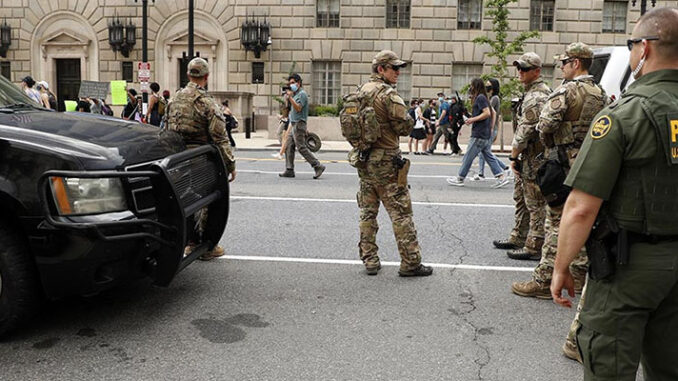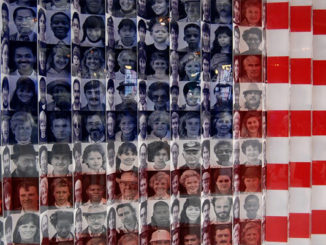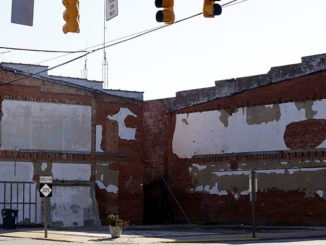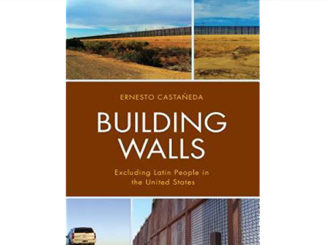
by Karl Jacoby
On June 1, Customs and Border Protection (CBP) dispatched more than 350 officers to Washington D.C. as part of the Trump administration’s effort to overawe marchers who had taken to the streets of the capital to protest police brutality. The officers were deployed alongside those from federal agencies ranging from the Bureau of Prisons to the Park Police. The CBP’s Acting Commissioner Mark Morgan defended the deployment of CBP in an inflammatory tweet: “These ‘protests’ have devolved into chaos & acts of domestic terrorism by groups of radicals & agitators. @CBP is answering the call and will work to keep DC safe.”
It wasn’t the first time CBP got involved in the protests. A few days earlier, on May 29, a CBP Predator Drone mysteriously appeared in the skies over Minneapolis-St. Paul to monitor protests in the Twin Cities. The CBP said that it deployed the drone “at the request of our federal law enforcement partners in Minneapolis,” but to date, no federal agency has come forward to admit to asking for the drone. “Nothing says protecting free speech like a Predator,” quipped Stephen Colbert on “The Late Night Show.”
For the many Americans watching and reading about the protests, the assortment of federal forces dispatched to the scene in Washington, DC, was dizzying—and, in the case of CBP, baffling. How did the CBP even have the authority to be there, on the streets of a city that feels far away from any border?
Unknown to many Americans, CBP has authority over a zone that runs from the border to 100 miles inland, all around the perimeter of the United States. This zone encompasses Washington, DC, along with nine of the 10largest U.S. cities and 10 full states, including Hawaii, Connecticut and Florida. And this border zone is not just geographically broader than most Americans realize; it also gives the CBP extra latitude in enforcing laws. Most crucially, the Fourth Amendment’s protection against “unreasonable searches and seizures” doesn’t apply in the border zone.
Most of the time, the power of the CBP in cities like Washington, DC, is latent—but as the protests have reminded us, it can spring to life at any time. And now, after an extraordinary wave of popular protest has been met by a show of force by the country’s full spectrum of law enforcement, it is time to revisit just how much power the CBP’s zone allows the agency to exercise—before they are given even more purview over local law enforcement.
The CBP’s border zone was formalized under the agency’s precursor, the Border Patrol, which was created in 1924. The Border Patrol’s original agents were a law unto themselves, allowed wide discretion to patrol the United States’ boundaries as they saw fit. Not until 1946 did Congress attempt to place clear parameters on the Border Patrol’s actions by passing Public Law 613. The law gave Border Patrol agents the power to arrest undocumented immigrants and to search vehicles “within a reasonable distance from any external boundary of the United States” without a warrant.
This law—which in essence regularized the extraordinary powers that Border Patrol agents had already assumed for themselves—raised the question: What constituted a “reasonable distance” from the border?
In 1953, without any public debate or discussion, the Department of Justice unilaterally selected a parameter of one hundred miles from the international boundary. The repercussions of this decision have turned out to be profound: Some 200 million Americans today live within this 100-mile-wide border, meaning that a majority of U.S. citizens inhabit a zone of diminished constitutional protections.
In the border zone, CBP officers can stop individuals and conduct searches without warrants in spite of the Constitution’s clause against “unreasonable searches and seizures.” Such searches can be alarmingly intrusive, including the confiscation or copying of electronic devices like cell phones or computers—or even manual searches of body cavities—so long as there is a “reasonable suspicion” that a border-crosser may be hiding contraband. In contrast, outside the border zone, police almost always must show a judge “probable cause” that a crime was committed to obtain a search warrant. As the term suggests, “reasonable suspicion” is a far less rigorous standard than “probable cause”: According to CBP training materials, an officer needs only to “suspect that a person might be engaged in criminal activity.”
In recent years, one of the most prominent—and, for many in the borderlands, least loved—manifestations of the border zone has been the scores of checkpoints that the CBP has set up on key transportation arteries, some permanent, some ad hoc “roving” checkpoints designed to catch travelers by surprise. As a result of the looser legal standards that U.S. courts have allowed to prevail in the border zone, officers can stop cars and question occupants about their immigration status and inspect vehicles far more broadly and more aggressively than would be permitted in the interior. For those who happen to live within 25 miles of the border, CBP can even patrol their private land.
Even if CBP’s extra-Constitutional powers remained within the official parameters, they would still pose risks to the human and civil rights of residents and travelers. Close to 75 percent of the United States’ Latino population lives within the zone, leaving them vulnerable to frequent harassment about their citizenship status. And a troubling pattern of abuse of force by CBP officers suggests that a border zone with only limited constitutional protections also endangers lives. In the border town of Nogales, Arizona, alone there have been several questionable shootings in the past several years. In 2012, a Border Patrol agent shot through the border fence 12 times, hitting 16-year old José Antonio Elena Rodríguez 10 times, eight of them in the back. In 2019, a CBP officer shot Angel Mendivil Perez, an American citizen, in the head as he drove into Mexico. There has yet to be an explanation for the shooting, and Mendivil has not been charged with a crime. Still, the officer who shot him has faced no repercussions; the agency has not even released his name. Both episodes reveal that officers along the border operate with little accountability, perhaps even less than the police elsewhere that Americans have taken to the streets to protest in recent weeks.
Once the government allows the establishment of a broad zone where constitutional protections do not apply, any meaningful distinction between the homeland and the borderland erodes, as recent events in Washington demonstrate. Minneapolis-St. Paul is located some 250 miles from the closest international border, yet somehow the CBP was able to position a drone above the city, in violation of the Justice Department’s 100-mile rule, with no apparent consequences. Unfiltered flight data reviewed by outside analysts has revealed that the CBP has also recently flown drones above San Antonio, which is also outside the hundred-mile border zone.
Recently, at the same moment that CPB officers were patrolling the city and CBP drones were flying over U.S. cities, the Trump administration put up a nine-foot anti-riot fence around the White House. That Trump has now built a “big, beautiful wall” in the heart of U.S. power is an apt metaphor for how the border has moved from the periphery to the center of American life. And it means that Americans can no longer afford to think that what happens at the border doesn’t affect the rest of us.
Karl Jacoby is the Allan Nevins Professor of American History and the co-director of the Center for the Study of Ethnicity and Race at Columbia University. He is the author of The Strange Career of William Ellis: The Texas Slave Who Became a Mexican Millionaire.



